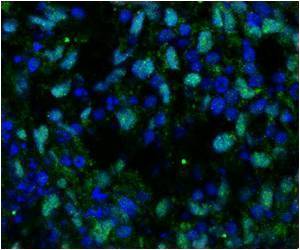Simpler and viable way to convert embryonic stem cells into beating heart cells with the deletion of a single gene.

‘Using CRISPR-Cas9 to knock out the YAP gene in ESC’s and then exposing them to the signaling molecule converts the cells directly to cardiomyocytes.’





"This discovery is really exciting because it means we can potentially create a reliable protocol for taking normal cells and moving them very efficiently from stem cells to heart cells," says Salk Professor Kathy Jones, the senior author of the paper. "Researchers and commercial companies want to easily generate cardiomyocytes to study their capacity for repair in heart attacks and disease--this brings us one step closer to being able to do that." In 2015, Jones' lab, which studies proteins that manage cell growth and development, discovered that two different cellular processes cooperate to enable embryonic stem cells (ESCs) to develop into specific cell types like pancreas, liver and heart. The team found that the Wnt pathway loads up the cellular machinery to begin copying and activating genes, and then the Activin pathway ramps up that activity many fold. Together, the two pathways (named for key proteins) direct stem cells to an intermediate stage from which they further progress into cells of specific organs. By exposing the cells to a signaling molecule at two different timepoints, the team could trigger first Wnt, then Activin, and end up with specialized cells.
In the process of their experimentation, the team also discovered a third pathway--governed by a protein called YAP--which seemed to put the brakes on the Activin pathway, thereby keeping stem cells from specializing.
Wanting to better understand this effect, in the current work Jones and first author Conchi Estarás set out to manipulate the YAP gene in various ways to see what would happen. They began by using the molecular scissors known as CRISPR-Cas9 to cut the gene out of ESCs' DNA so they could no longer make the YAP protein. Then the duo exposed the cells to the signaling molecule to see what, if anything, happened.
To their great surprise, the cells went from the stem cell stage directly to beating heart cells.
Advertisement
Intriguingly, further analysis revealed that the same genes were being turned on as would be activated via the normal Wnt-Activin stem-cell specialization process.
Advertisement
Because removing a gene entirely can have unintended effects, the team next wants to test whether they can turn off the YAP gene using small commercially available inhibitor molecules, and still derive functioning cardiac cells from stem cells.
Source-Eurekalert














